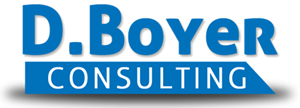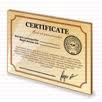Business is mostly conducted via email or phone communications.
Office hours 10:00 a.m. to 6:00 p.m, Mon. - Thurs., and 10:00 a.m. to 2:00 p.m. on Fridays.
SEND EMAIL INQUIRIES DIRECTLY TO:
Dawn.Boyer@me.com
Business is mostly conducted via email or phone communications.
Office hours 10:00 a.m. to 6:00 p.m, Mon. - Thurs., and 10:00 a.m. to 2:00 p.m. on Fridays.
SEND EMAIL INQUIRIES DIRECTLY TO:
Dawn.Boyer@me.com
Business is mostly conducted via email or phone communications.
Office hours 10:00 a.m. to 6:00 p.m, Mon. - Thurs., and 10:00 a.m. to 2:00 p.m. on Fridays.
SEND EMAIL INQUIRIES DIRECTLY TO:
Dawn.Boyer@me.com
Obtaining More Education and Training Resume Bullets
November 4th, 2013 by Dawn Boyer
Obtaining More Education and Training Resume Bullets
(Don’t have time to read? Listen to the podcast!
This and other podcasts are available on iTunes for free!)
An important indicator of a resume’s owner’s job potential is the education and training sections. This tells a recruiter or hiring manager two things: 1) that the job candidate stuck to a long-term program of education and made it to the finish line, and 2) the job candidate is open to continuing learning as an adult that complements or enhances their job experience. It is vital to show additional training achieved after the standard college education to show a trend for continued adult-learning.
During the most recent economic down turn (Fall 2008/Spring 2009) many workers lost their jobs. This was accompanied by a marked increase of educational enrollments in colleges, universities, as well as technology and trade schools. This was for first-year freshman, as well as those classified as ‘mature students’ going back to community colleges. Those lucky enough to qualify for government Pell grants or student loans were able to add new bullets to their resumes, including certifications, training courses, specific classes related to their career, or even added on a new college degree.
For those who don’t have time, money, or capabilities to obtain degree program courses or with variable schedules that don’t allow for traditional classroom teaching, there are training alternatives. Some training opportunities are accredited, while others just supply the knowledge, and it’s up to the learner to take on the new skill and apply it to the work environment. For today’s job seeker and career path worker, obtaining and concentrating on new learning experiences may make the difference in obtaining promotions or getting the upper hand on that job’s competition.
Resources for obtaining ‘free’ education and training are as simple as searching on the Internet. The easiest source to find professional training is in YouTube. Querying on specific ‘how to’ videos can teach you a trick in less than five minutes – ranging from how to use new versions of software packages to learning a complicated statistical analysis process. Most of YouTube video training is free, but some of the videos are ‘for rent’ from as little as 99 cents for a 24-hour access up to $19.99 for a week’s worth of access. Some of the paid videos are the more concentrated and targeted training that is put together by a subject matter expert relying on the video rentals for income streams.
If you are a veteran who was in the service after 9/11, you are eligible for the Montgomery GI bill, which provides not only tuition, books, and lab fees, it also provides funding for living expenses while attending school full-time, and benefits are assignable to immediate family members (pre-9/11 benefits are similar, but may not be as generous in funding to veterans who terminated before the event.) One example of free university programs is Syracuse University, who provides a no-cost Veterans Career Transition Program (VCTP) to veterans, as well as the parallel program for Military Families in the The Entrepreneurship Bootcamp for Veterans’ Families (EBV-F) program.
Open Course Ware (OCW) or Massive Open Online Course (MOOC) is a phenomenally trending educational alternative. Many Ivy-league schools, as well as other prominent universities or colleges are offering free public classes, courses, and some certification programs to the public. There is an opportunistic reason for providing the courses. Specifically, branding or providing pre-college level environment for learning to potential new or transferring students. Searching for ‘free college courses’ online, MOOC, or ‘Open Online Campus’ produces dozens, if not hundreds, of sources such as: 1) Coursera, 2) MIT OpenCourseWare, 3) Udacity, and 4) MOOC campus. These websites list thousands of courses you can attend for free, potentially take ‘on-line’ via telecourses, videos, or podcasts you can listen to via your smart device. Some offer certifications that are as valid and accredited as the brick-and-mortar schools.
Don’t let any circumstance prevent you from obtaining new education or training, and ensure that you learn something new weekly, monthly, or annually that is directly applicable to your life-long learning and your career track. Money or time should not be a barrier to your adding these valuable bullets to your resume.
Dawn Boyer, Ph.D., is the owner of D. Boyer Consulting – providing resume writing, social media management, business development, and human resources consulting. Reach her at: Dawn.Boyer@DBoyerConsulting.com or https://dboyerconsulting.com.
Readers Comments
Obtaining More Education and Training Resume Bullets
November 4th, 2013 by Dawn Boyer
Obtaining More Education and Training Resume Bullets
(Don’t have time to read? Listen to the podcast!
This and other podcasts are available on iTunes for free!)
An important indicator of a resume’s owner’s job potential is the education and training sections. This tells a recruiter or hiring manager two things: 1) that the job candidate stuck to a long-term program of education and made it to the finish line, and 2) the job candidate is open to continuing learning as an adult that complements or enhances their job experience. It is vital to show additional training achieved after the standard college education to show a trend for continued adult-learning.
During the most recent economic down turn (Fall 2008/Spring 2009) many workers lost their jobs. This was accompanied by a marked increase of educational enrollments in colleges, universities, as well as technology and trade schools. This was for first-year freshman, as well as those classified as ‘mature students’ going back to community colleges. Those lucky enough to qualify for government Pell grants or student loans were able to add new bullets to their resumes, including certifications, training courses, specific classes related to their career, or even added on a new college degree.
For those who don’t have time, money, or capabilities to obtain degree program courses or with variable schedules that don’t allow for traditional classroom teaching, there are training alternatives. Some training opportunities are accredited, while others just supply the knowledge, and it’s up to the learner to take on the new skill and apply it to the work environment. For today’s job seeker and career path worker, obtaining and concentrating on new learning experiences may make the difference in obtaining promotions or getting the upper hand on that job’s competition.
Resources for obtaining ‘free’ education and training are as simple as searching on the Internet. The easiest source to find professional training is in YouTube. Querying on specific ‘how to’ videos can teach you a trick in less than five minutes – ranging from how to use new versions of software packages to learning a complicated statistical analysis process. Most of YouTube video training is free, but some of the videos are ‘for rent’ from as little as 99 cents for a 24-hour access up to $19.99 for a week’s worth of access. Some of the paid videos are the more concentrated and targeted training that is put together by a subject matter expert relying on the video rentals for income streams.
If you are a veteran who was in the service after 9/11, you are eligible for the Montgomery GI bill, which provides not only tuition, books, and lab fees, it also provides funding for living expenses while attending school full-time, and benefits are assignable to immediate family members (pre-9/11 benefits are similar, but may not be as generous in funding to veterans who terminated before the event.) One example of free university programs is Syracuse University, who provides a no-cost Veterans Career Transition Program (VCTP) to veterans, as well as the parallel program for Military Families in the The Entrepreneurship Bootcamp for Veterans’ Families (EBV-F) program.
Open Course Ware (OCW) or Massive Open Online Course (MOOC) is a phenomenally trending educational alternative. Many Ivy-league schools, as well as other prominent universities or colleges are offering free public classes, courses, and some certification programs to the public. There is an opportunistic reason for providing the courses. Specifically, branding or providing pre-college level environment for learning to potential new or transferring students. Searching for ‘free college courses’ online, MOOC, or ‘Open Online Campus’ produces dozens, if not hundreds, of sources such as: 1) Coursera, 2) MIT OpenCourseWare, 3) Udacity, and 4) MOOC campus. These websites list thousands of courses you can attend for free, potentially take ‘on-line’ via telecourses, videos, or podcasts you can listen to via your smart device. Some offer certifications that are as valid and accredited as the brick-and-mortar schools.
Don’t let any circumstance prevent you from obtaining new education or training, and ensure that you learn something new weekly, monthly, or annually that is directly applicable to your life-long learning and your career track. Money or time should not be a barrier to your adding these valuable bullets to your resume.
Dawn Boyer, Ph.D., is the owner of D. Boyer Consulting – providing resume writing, social media management, business development, and human resources consulting. Reach her at: Dawn.Boyer@DBoyerConsulting.com or https://dboyerconsulting.com.











